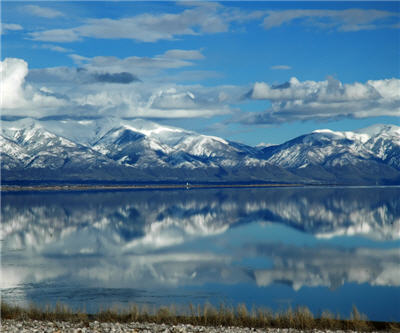
VANCOUVER, BRITISH COLUMBIA–(Marketwire – May 9, 2012) – Mesa Exploration Corp. (TSX VENTURE:MSA)(PINKSHEETS:MSAJF) (“Mesa”) announces an update on progress at the 100% owned Bounty Potash Project in the Great Salt Lake Desert of western Utah. Dr. Wallace Gwynn, a saline brine expert recently retired from the Utah Geological Survey, has provide to Mesa a summary report on various aspects of the Bounty Potash Project. Dr. Gwynn has an intimate knowledge of the potash production from brine in the Great Salt Lake Desert and the Great Salt Lake of western Utah.
The report by Dr. Gwynn documents previous work completed at the project, summarizing aquifer recharge and discharge, brine concentrations, chemistry and provisional extraction strategies. Historic brine chemistry is summarized as well as detailed climate data documenting recharge and evaporation rates useful in planning potential potash production. Preliminary exploration work and data collection plans in the report chart a path forward to develop the project with detailed reporting and exploration work to follow based upon this report.
A Utah-based drilling contractor with extensive local brine drilling experience has been engaged for the program. Cross Marine Projects Company has over 38 years of experience and has equipment specifically designed for working on salt flats and playas. Permitting is advancing with the expectation that drilling will commence this summer.
About the Bounty Potash Project
Historic exploration work at Bounty was conducted in 1966 by Quintana Petroleum. Quintana drilled 35 auger holes resulting in the definition of 5.1 million tons of potash (MOP) grading 6.8 grams/liter. Quintana limited the estimation of the resource to the top 10 feet of the brine aquifer, the depth limits of the auger drilling equipment; Mesa controls 80% of this resource. The Quintana resource is historical in nature and was calculated using a polygonal contour estimation method, the industry standard prior to NI 43-101 standards, thus it is not NI 43-101 compliant and should not be considered as a current resource.
The project is 15 miles north of Intrepid Potash’s Wendover operation, a potash mine which is chemically and physically analogous to the deposit at the Bounty project. The Bounty project consists of 90 square miles of potash prospecting permit applications from the Bureau of Land Management (BLM) and 14 square miles of Potash Leases from the State of Utah. The Wendover mine has been in production for 75 years utilizing a system of potash brine collection ditches and solar evaporation ponds, with potash and salt being processed in a simple flotation mill. The Wendover mine has annual production of 100,000 tons of potash and 200,000 tons of magnesium chloride, grossing $60 million per year.
The Bounty project area is a remnant of a regional Pleistocene lake which deposited a salt flat underlain by a potash brine aquifer at depths of 2 to 6 feet. The aquifer is contained in a bed of sand, silt and clay. Several potash brine mines in the area are operating on similar lake remnants, producing muriate of potassium (MOP) and sulphate of potassium (SOP), at operating costs of $180 per ton. MOP sells for $500 per ton and SOP for $650 per ton.
About Mesa Exploration
Mesa is developing and exploring a portfolio of mineral properties in the United States where it controls significant land holdings in proven mining districts with excellent access and infrastructure. Mesa currently has 14 million shares issued and outstanding, 50% of the shares are controlled by insiders and institutions. For further information please visit our website at www.MesaExploration.com.
ON BEHALF OF THE BOARD
MESA EXPLORATION CORP.
Foster Wilson, President and CEO
This news release includes certain statements that may be deemed “forward-looking statements”. All statements in this release, other than statements of historical facts, including the likelihood of commercial mining and possible future financings are forward-looking statements. Although the Company believes the expectations expressed in such forward-looking statements are based on reasonable assumptions, such statements are not guarantees of future performance and actual results or developments may differ materially from those in the forward-looking statements. Factors that could cause actual results to differ materially from those in forward-looking statements include unsuccessful exploration results, changes in metals prices, changes in the availability of funding for mineral exploration, unanticipated changes in key management personnel and general economic conditions. Mining is an inherently risky business. Accordingly the actual events may differ materially from those projected in the forward-looking statements. For more information on the Company and the risks and challenges of its business, investors should review the Company’s annual filings that are available at www.sedar.com.